Physical Address
304 North Cardinal St.
Dorchester Center, MA 02124
The most frequently used modality for evaluation of bone and joint disorders is radiography. Radiography is the initial modality used in the setting of trauma, infection, and arthritis. It is useful for characterizing benign and malignant bone lesions and bony changes seen in metabolic conditions; it can also be used to locate foreign objects and guide intervention.
Understanding the principles of proper radiographic technique is essential to the practicing radiologist. Although increasing kilovoltage (kV) results in increased tissue penetration, the peak absorption energy of calcium is at relatively low kV; therefore, proper radiographic technique for bone includes use of a lower kV, typically 50 to 60 kV to increase contrast versus 90 to 120 kV for soft tissue exams such as abdomen and chest. Generally at least two views of the anatomy at 90-degree angles to each other are obtained. Standard views include anteroposterior (or posteroanterior) and lateral. Occasionally, oblique and specialized views are necessary to inspect certain cortical margins, particularly when evaluating complex structures such as the elbow, wrist, ankle, and pelvis. It is beneficial to have a working knowledge of commonly ordered specialized views. In problematic pediatric cases, a radiograph of the contralateral, asymptomatic limb can prove helpful to distinguish normal growth variation from pathology.
Positional views can be helpful to define mechanical pathology that may not be manifest at rest. The classic example is cervical flexion and extension views acquired to diagnose instability. In other areas of the body it may be useful to apply external stress; for instance, at the wrist, instability (exhibited as carpal malalignment) is often seen only when placed under axial load stress with flexion, extension, radial/ulnar deviation, and circumduction. Static stress images can be acquired, or the anatomy can be observed in real time under fluoroscopy (see eFig. 1-1 ).
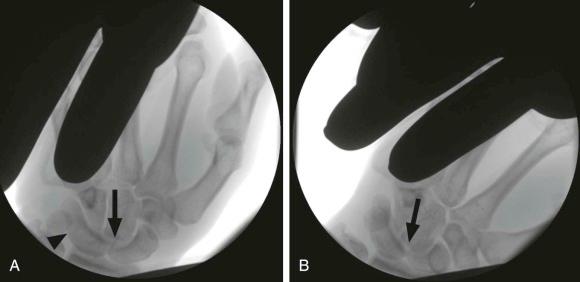
A weight-bearing view may be of value for a dynamic evaluation of the joint space under physiologic conditions. For example, posterior tibialis tendon dysfunction in early stages may only be apparent radiographically on standing views with characteristic arch collapse, hindfoot valgus, and overpronation. On knee radiographs, the true severity of joint narrowing may only be seen when axial load is applied.
Advertisements in popular media for “miracle cures” of arthritis—promising restoration of the joint space—typically show frontal radiographs of the knee with weight bearing (pretreatment image) and without weight bearing (posttreatment image).
Fluoroscopy is also useful for needle guidance for many procedures, including arthrography, joint aspiration or therapeutic injection, bursal and periarticular injection, biopsy, and spine intervention. Although “plain arthrography” is rarely performed today, fluoroscopically guided injection of contrast for CT or MR arthrography is an essential part of the diagnostic algorithm for joint internal derangement ( Fig. 1-1 ). CT and MR arthrography can be used for evaluation of cartilage and fibrocartilage tear and recurrent tear following surgery, for supporting ligament and capsular tears, and for characterization of osteochondral lesions and detection of intraarticular bodies. In addition, anesthetic can be injected into the joint to assess for pain relief to differentiate articular pathology from referred symptoms; this is especially useful in evaluation of the hip.
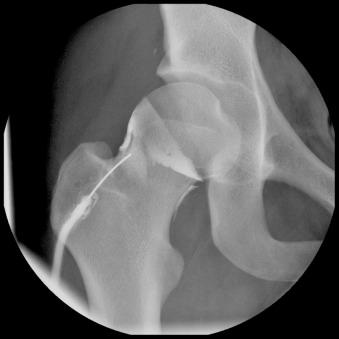
Digital radiography has revolutionized and revitalized the basic modality. With a broader range of windowing and leveling available, technical acquisition flaws are less apparent. However, this has tended to take the “art” and away from quality imaging; to avoid underexposed images, technologists may use more radiation because information on overexposed images is more easily retrieved.
Although standard radiography is the mainstay of musculoskeletal imaging, new radiographic imaging techniques continue to emerge. Computer-assisted diagnosis and modeling systems continue to revolutionize clinical practice. Routine measurements and angles can be computed semiautomatically.
Ultrasonography is a powerful imaging tool in the evaluation of musculoskeletal abnormalities. Given its dynamic capability, ultrasonography can readily evaluate a patient's symptoms, particularly if focal symptoms are present. It can demonstrate active subluxation of tendons (e.g., peroneal tendons; Fig. 1-2 ). Provocative maneuvers ( Fig. 1-3 ) can be done to elicit symptoms and assess for pathology of underlying muscles, ligaments, or tendons. Direct visualization during needle placement and monitoring of injected/aspirated material can be done. In addition, ultrasonography can evaluate vascularity and provide continuous feedback during therapeutic procedures.
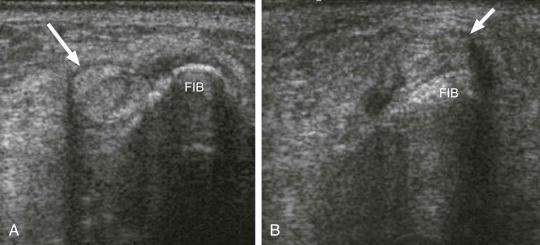
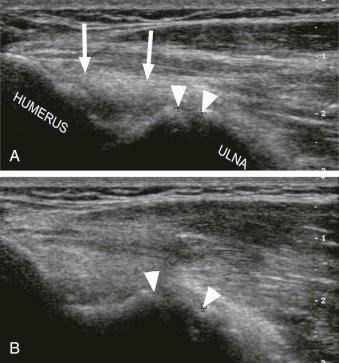
Proper ultrasonography evaluation requires the use of a high-frequency linear transducer, in most cases at least 7.5 MHz. Higher frequency transducers produce higher resolution images but do not penetrate tissue as deeply. Because many musculoskeletal structures of interest tend to be linear in configuration (i.e., tendons and ligaments) and superficial, higher-frequency transducers are ideal. Curvilinear transducers can be used to evaluate deeper structures, such as deep hip aspirations or soft tissue biopsies. Smaller footprint linear transducers, or “hockey stick” transducers, are very helpful in evaluation of the hands and feet where the limited body surfaces prevent use of larger transducers. Correct focal zone location and minimizing depth to include only the region of interest are two additional easily selectable parameters to optimize imaging. Compound imaging, harmonic imaging, and extended field of view (FOV) (see eFig. 1-2 ) can be used to improve tissue plane definition, improve joint and tendon surface visibility, and measure large abnormalities.
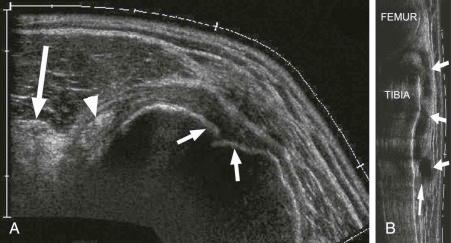
Doppler and power Doppler imaging ( Fig. 1-4 ) are valuable adjuncts in evaluation of the musculoskeletal system. Doppler imaging shows colored blood flow superimposed on a grayscale image and can provide both speed and direction of blood flow. Power Doppler imaging is independent of speed and direction of flow, and therefore, all moving particles will show signal. Power Doppler is more sensitive than color Doppler imaging for small vessels and, in particular, low-velocity flow. Power Doppler imaging is very useful in evaluation of inflammatory arthropathies to detect synovitis and response to treatment. It can also be used to identify areas of hyperemia (i.e., around tendon insertions) to target for percutaneous therapy.
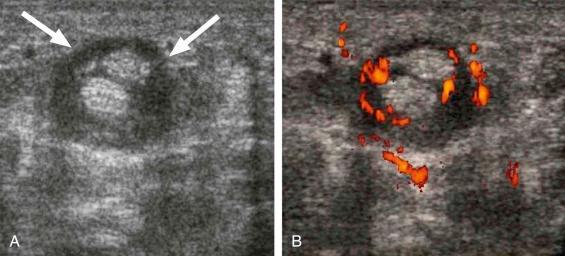
A common artifact during ultrasound evaluation of tendons is anisotropy, or direction dependence. Anisotropy occurs in tendon and ligaments when the angle of the transducer is changed ( Fig. 1-5 ). Tendon fibers have a hyperechoic fibrillar appearance when the transducer is perpendicular to the tendon but can appear hypoechoic when the transducer is angled obliquely. This can cause interpretation error if areas that look tendinotic are not adequately evaluated at multiple angles. On the other hand, rocking the probe back and forth can be useful to differentiate tendon from surrounding structures, as the tendon with its monotonous linearly arranged collagenous architecture will demonstrate anisotropy, whereas surrounding tissues will not.
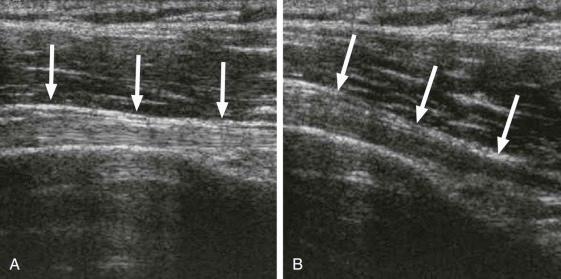
Multidetector CT is an important adjunct in the musculoskeletal imaging arsenal. As detector arrays have increased, helical imaging has allowed multiple data streams to be acquired in each slice. Consequently, this has allowed for thinner collimation and the acquisition of thin-slice volume data sets approaching isotropic voxels, in which the slice thickness approaches pixel dimension in the transverse plane. Single-slice CT scanners generated very limited reformatted images. Multidetector CT, in contradistinction, can generate a near–three-dimensional dataset with reformatted images in any plane at resolution similar to that of the axial images ( Fig. 1-6 ).
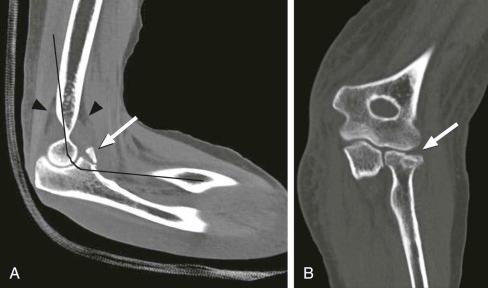
Given the ability to acquire multiple helical data streams in each slice, larger regions can be covered per unit time without increasing slice thickness or pitch, both of which can corrupt image quality. This increase in speed has multiple benefits. It extends anatomic coverage, reduces scanning and setup times, allows scanning in nonanatomic positions, decreases the need for sedation, and reduces motion artifact. This is particularly useful in a trauma setting, in an extremity fracture with a patient in a cast or when a patient cannot comfortably straighten the extremity long enough to scan, or in the pediatric setting when the patient may not remain motionless for long.
A working knowledge of basic physical principles of multidetector CT is essential to achieving high-quality musculoskeletal CT images and reformats:
Focal spot : Higher spatial resolution can be achieved with a smaller focal spot, but this can limit tube current and facilitate tube overheating in lower-slice multidetector scanners. Larger focal spots may be necessary in larger patients or when wide anatomic coverage is required.
Pitch : Table motion (per gantry rotation) divided by width scanned (Z-axis direction). A pitch of 1 or greater indicates no overlap of slices. In contrast, a pitch less than 1 means that there is overlap of data. In musculoskeletal imaging, a good rule of thumb is to acquire images of the extremities with a pitch less than 1, especially in situations with “photon deprivation” such as in the presence of metal.
mAs : The amount of current used to generate X-rays during scanning. The higher the mAs, the greater the photon flux. Because dose is proportional to mAs, patient exposure becomes a consideration. Like lowering pitch, increasing mAs with increased photon flux can improve image quality.
kVp : The peak energy of photons being sent into the patient. Higher kVp photons can help penetrate dense body regions or larger patients. Higher kVp exams can significantly increase dose to the patient, however, unless other parameters are adjusted.
Filter : Otherwise known as the reconstruction algorithm or kernel, filters are different ways the scanner can display the data acquired. The bone algorithm is typically chosen for imaging the musculoskeletal system as it sharpens edges, thereby accentuating cortical bone and trabeculae. It also increases noise, so if there is high-density soft tissue, contrast, or metal in the FOV, the quality of the images can be degraded. In these cases, a soft tissue algorithm can sometimes find a better balance between image quality and artifact (see eFig. 1-3 ).
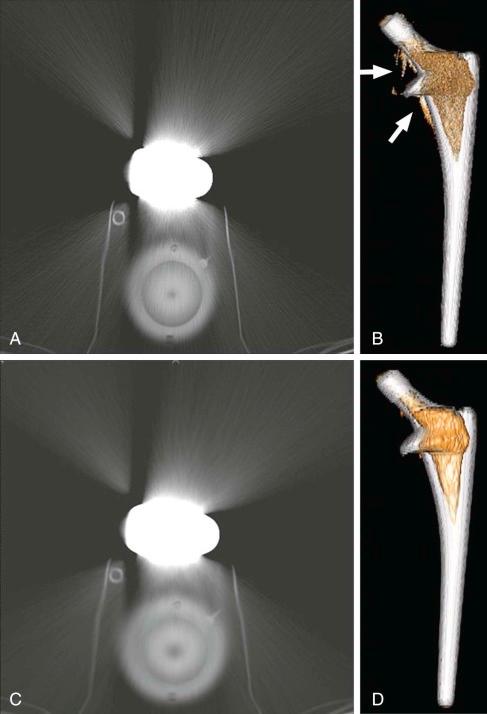
Angulation : When isotropic scanning is not possible because of thicker slice-width selections, the “principle of obliquity” can be used to optimize image quality of reformatted images. An affected joint should be positioned so the scanning plane is oblique to the joint surface, ideally 45 degrees. It should also be placed in the center of the CT gantry. This technique allows a greater number of slices to transverse the joint surface and improves definition of the osseous anatomy in subsequent reformatted images. Scanning along the long axis of metal implants can also be used to reduce artifact.
Severity of metal artifact depends on material ( Fig. 1-7 ); increased photon flux (i.e., increased kVp, mAs, decreased pitch) improves image quality on any CT scanner. Multidetector CT allows a higher effective tube current–time product (tube current–time product divided by pitch), which decreases beam-hardening artifacts caused by photon starvation. This allows much better characterization of prostheses and improved evaluation of healing around fixation. In addition, CT arthrography can be performed with full-strength contrast; as a result of improved image quality and diminished streak artifact ( Fig. 1-8 ), CT arthrography has become a more popular modality for evaluating intraarticular pathology. Lower pitch values with increased KVp can be used to image larger patients or large joints.

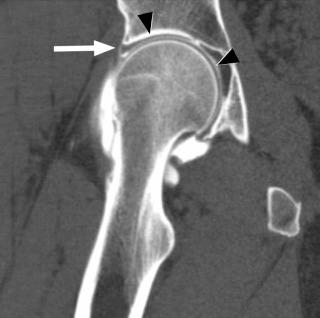
New techniques such as dual-energy CT have shown significant potential in musculoskeletal imaging ( Fig. 1-9 ). Dual-source CT scanners are equipped with two X-ray tubes, allowing simultaneous acquisition at two different energy levels. This can characterize the chemical composition of material according to the differential X-ray photon energy–dependent attenuation of the structures being examined at the two different energy levels. It is highly specific in detecting uric acid deposits in gout and in monitoring response to treatment. Other applications include minimizing metal prosthesis artifacts, detecting bone marrow edema, and visualizing pathologic tendons and ligaments.
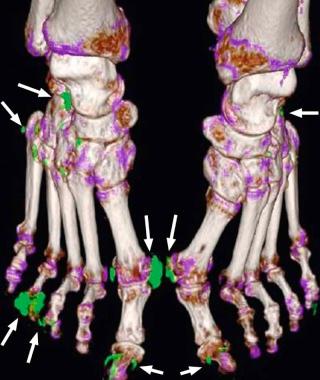
As the mainstay in advanced musculoskeletal imaging, MRI provides a wealth of information on anatomy and tissue composition. The different magnetic field strengths, open versus closed configurations, and different coils and configurations all provide unique information. An understanding of these properties can assist when creating protocols for musculoskeletal MR imaging examinations. Planes and sequences should be designed to display relevant anatomy and pathology, maximizing signal-to-noise ratio (SNR).
Differences between low–field-strength (0.7 T and less) and high–field-strength MRI are important. Overall, lower tissue signal is produced on low–field-strength MR. Consequently, the number of signal averages is increased, which increases imaging time and risk of motion artifact. Frequency-selective fat suppression is limited on low–field-strength scanners. Rather than a T2-weighted fat-suppressed image, a standard sequence on high–field-strength scanners, short tau inversion recovery (STIR) images are often acquired to achieve fluid conspicuity. Generally, these images are lower in resolution and may require a larger field of view. An alternative for enhancing fluid signal without fat suppression on low–field-strength MR is increasing echo time (TE); because TE is inversely proportional to SNR, this will ultimately degrade images and makes evaluation of focal cartilage lesions difficult. Lack of robust fat suppression on T1-weighted images also limits the routine use of low–field-strength MRI in MR arthrography and contrast enhancement for tumor or infection imaging. Advantages of low–field-strength MR include decreased artifact from orthopedic hardware (mitigated on higher field-strength MR by advances in gradient technology), decreased chemical shift artifact, and the ability to image heavier patients (in some cases up to 500 lb) in an open environment.
High-field MRI (i.e., greater than 1.5 T), especially 3 T, is playing an increasing role in daily practice. The biggest advantage of 3-T MR is higher overall signal. The improved SNR allows an increase in matrix, decrease in slice thickness, and decrease in FOV, all of which result in improved resolution. Imaging of the small joints, hyaline cartilage, and labrum is potentially improved. Alternatively, the increase in signal can decrease the number of excitations (NEX), thereby shortening examination times. Some drawbacks to high–field-strength MR exist—namely, the increase in specific absorption rate, or SAR, which represents the energy absorbed by the tissue from the radiofrequency pulse. This effect can be lessened by prolonging repetition time (TR), reducing the flip angle and echo train length, using pauses, using parallel imaging, and using low-SAR pulse sequences. Second, B1 heterogeneity is stronger because of inhomogeneous radiofrequency excitation. This can be partially overcome by using 2D and 3D spectral attenuated inversion recovery (SPAIR) sequences. A third disadvantage is lower T1 contrast due to slower T1 relaxation times, which can result in intermediate fluid signal on T1-weighted images. Last, given the increased magnetic field strength, artifacts are more prominent, in particular chemical shift, pulsation, truncation, and magnetic susceptibility artifacts. High-field scanners often have less magnetic field homogeneity over the same gantry size compared with lower field scanners, which can result in unwanted edge effects on larger-FOV images.
Perhaps the most important factor in determining quality of musculoskeletal MR imaging is coil selection. Given the wide variation in configuration and quality of surface coils for extremities, there is significant potential to produce less-than-optimal images. In general, the smallest coil possible should be used for imaging to achieve the desired field of view (see eFig. 1-4 ). The more closely the coil sits against the body part, the better the images will be. Send/receive and phased-array, multichannel coils are increasingly being developed, allowing for improved field uniformity and image quality with a reduced SAR ( Fig. 1-10 ). Advantages of phased-array coils include shorter scan times and the ability to cover a wider anatomic area. Regardless of selection, the coil should be positioned to optimally image the area of interest. When patients may not be able to hold a position because of discomfort, sometimes a more comfortable second option should be considered, as the original position may cause patient motion and degraded images.
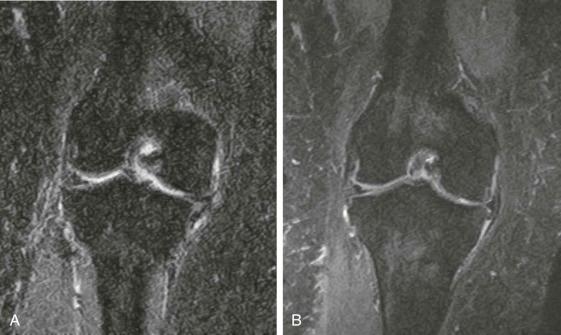
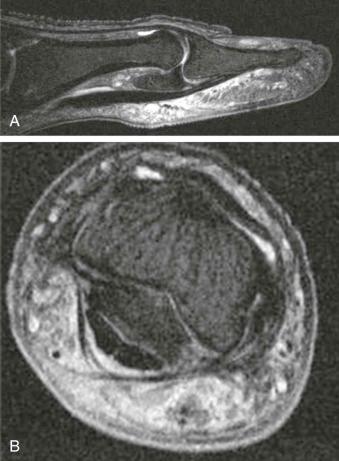
Selecting sequences of a musculoskeletal imaging exam requires a balance between overall imaging time and whether contrast resolution or spatial resolution is more important to detect the pathology in question. Sequences with high spatial resolution are useful for evaluating articular cartilage and small structures such as the labrum of the hip and interosseous ligaments of the wrist. Requiring a high SNR, the radiologist can decrease field of view (FOV) and increase matrix. Gradient-echo images (GRE) provide both high in-plane and out-of-plane resolution. In-plane resolution, or the ability to discriminate adjacent structures in the XY plane, is related to SNR, FOV, and matrix. Out-of-plane resolution, on the other hand, is related to interslice gap and slice thickness. 3D GRE sequences can be acquired at very narrow slice thickness without a gap. Because fat and fluid both contribute signal, proton-density (PD) images provide high SNR. This added signal can be used to decrease FOV and increase image matrix size, thus increasing spatial resolution.
Sequences with high contrast resolution provide a large difference in signal between the anatomic structures being imaged and the surrounding tissues. For example, a fat-suppressed T2-weighted image of the wrist has high contrast resolution if fluid is very hyperintense and the triangular fibrocartilage is very hypointense. Generally a STIR image has high contrast but is limited by lower spatial resolution. Although it may be desirable to combine high contrast and spatial resolution, these often cannot be combined in the same imaging sequence. Consequently, protocols should be constructed with both high–spatial-resolution sequences (high matrix, small-FOV proton density or gradient echo) and high–contrast-resolution sequences (fat-suppressed T2-weighted imaging or STIR).
Become a Clinical Tree membership for Full access and enjoy Unlimited articles
If you are a member. Log in here